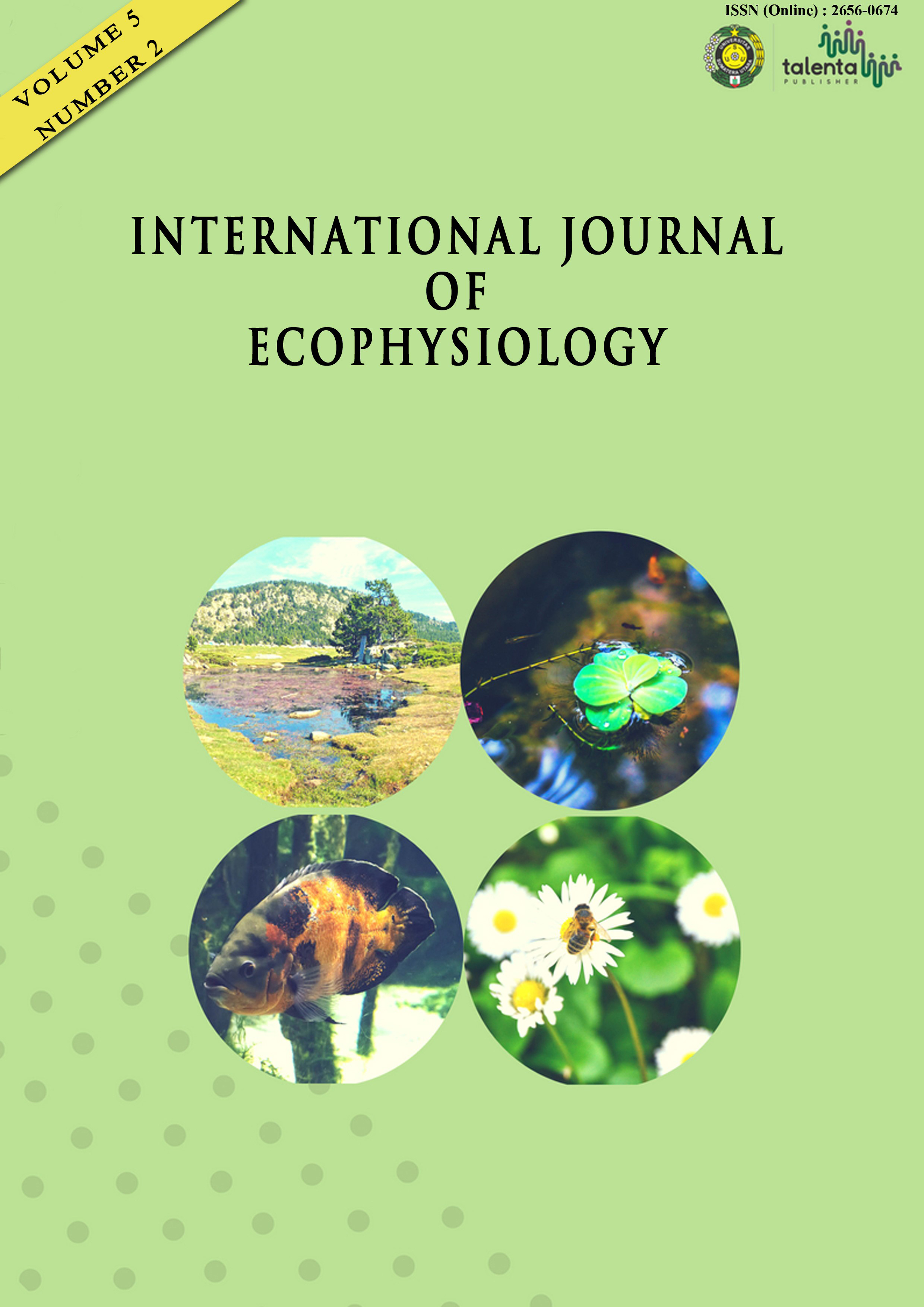Potential of Rhizophora apiculata Blume. in Phytoremediation of Heavy Metals Pb and Cu in the Mangrove Forest Nature Reserve East Coast, Alang-Alang Village, Tanjung Jabung Timur, Jambi
DOI:
https://doi.org/10.32734/ijoep.v5i2.14130Keywords:
Phytoremediation, East Coast Mangrove Forest Reserve area, Heavy Metals, Rhizophora apiculata BlumeAbstract
The Mangrove Forest Nature Reserve East Coast (CAHBPT) in Jambi Province has functions, one of which is to improve water quality by absorbing dangerous heavy metals such as Pb and Cu which come from various human activities around the waters. This absorption can be done by using hyperaccumulator plants such as Rhizophora apiculata Blume. This study aims to determine the potential and mechanism of R. apiculata in the phytoremediation of heavy metals Pb and Cu in the CAHBPT area, Alang-Alang Village, Tanjung Jabung Timur Regency, Jambi Province. Sampling was carried out using the purposive sampling method at three stations. The calculation of the Bioconcentration Factor (BCF) aims to determine the potential of R. apiculata in phytoremediation Pb and Cu metals, as well as the calculation of the Translocation Factor (TF) to determine the phytoremediation mechanism of R. apiculata. The results of this research found that the accumulation of Pb and Cu metals in sediments ranged from 11.04-12.36 mg/kg and 7.93-9.08 mg/kg. The accumulation of Pb and Cu metals in the roots of R. apiculata ranges from 2.34-2.65 mg/kg and 1.56-2.93 mg/kg. The accumulation of Pb and Cu metals in the shoots of R. apiculata ranged from 2.77-3.16 mg/kg and 0.61-1.05 mg/kg. The phytoremediation potential of R. apiculata at the research site is included in the excluder category or plants still limit the accumulation of heavy metals entering the body (BCF<1). R. apiculata at the research site translocated Pb metal using a phytoextraction mechanism (TF>1) and Cu metal using a phytostabilization mechanism (TF<1).














